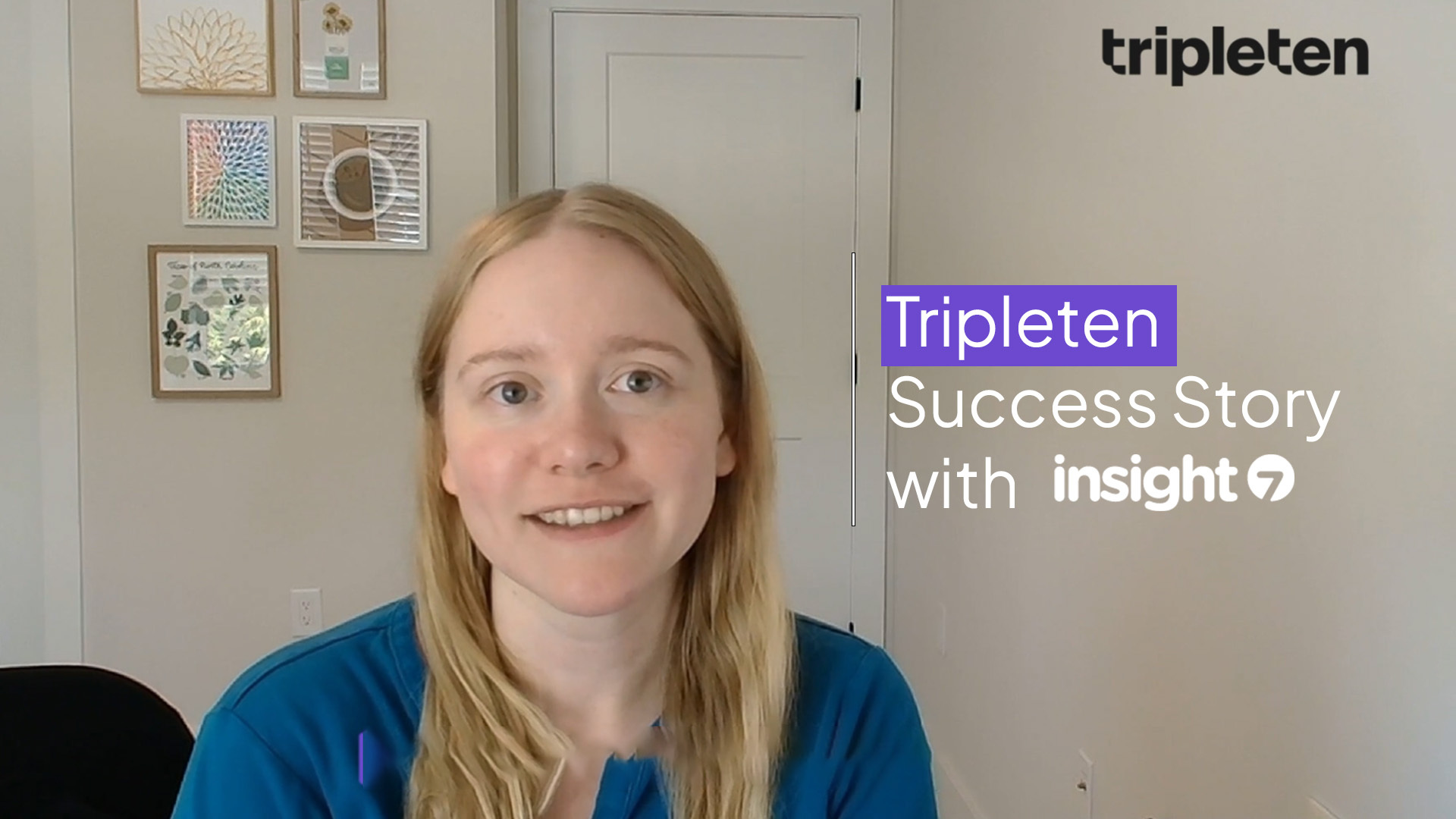Analytics Call Tracking: Essential Guide for Marketers
-
Bella Williams
- 10 min read
Call Tracking Optimization begins with a compelling opportunity: understanding customer interactions through their voices. As marketers, deciphering these conversations helps refine strategies and enhance engagement. By immersing ourselves in Analytics, we equip our campaigns with vital insights gained from real-time conversations.
This section introduces the significance of optimizing call tracking in analytics. Call Tracking Optimization not only provides clarity on customer behaviors but also directly aligns with marketing objectives. As we delve deeper, we’ll explore how effective methodologies translate raw data into actionable strategies, ultimately leading to improved customer relations and return on investment.
Generate visualizations from your qualitative data. At Scale.

Understanding the Basics of Call Tracking Optimization
Call Tracking Optimization serves as a crucial component in enhancing marketing efficiency. By understanding how it functions, marketers can unlock valuable insights into customer interactions and engagement. This process involves systematically collecting and analyzing data from phone calls to determine the effectiveness of advertising channels and campaigns. With this knowledge, marketers can tailor their strategies to better meet consumer needs.
Furthermore, effective optimization allows for the identification of key trends and patterns from call data. This enables marketers to discover which products or services generate the most inquiries, thereby refining their training procedures and enhancing customer service. Ultimately, mastering Call Tracking Optimization not only increases the return on investment but also provides marketers with actionable insights that can lead to more informed decision-making and improved customer experiences. Understanding these basics is the first step towards leveraging this powerful tool in the marketing toolbox.
What is Call Tracking Optimization?
Call Tracking Optimization refers to the process of enhancing the management and analysis of phone calls generated from marketing efforts. By effectively tracking these calls, businesses can better understand customer interactions and make informed decisions based on real-time data. This optimization not only improves the quality of customer engagement but also helps in refining marketing strategies to maximize outreach.
The significance of Call Tracking Optimization lies in its ability to provide insights into which marketing campaigns drive phone inquiries. Integrating this practice within your marketing strategy allows for more tailored customer experiences and facilitates improved ROI tracking. As teams analyze call data, they can identify trends, assess performance, and pinpoint areas needing enhancement, thereby ensuring that communication remains effective and relevant to the audience's needs.
- Definition and significance.
Call tracking optimization refers to the process of using advanced technologies to monitor and analyze phone interactions related to marketing initiatives. It enables marketers to determine which campaigns are generating calls, allowing for more precise marketing strategies. This understanding is crucial for refining advertising efforts, optimizing resources, and ultimately improving return on investment.
The significance of call tracking optimization lies in its ability to enhance customer insights. By gathering data on customer calls, marketers can identify trends, preferences, and pain points that inform their overall strategy. Furthermore, as businesses adapt to changing market dynamics, leveraging call tracking insights becomes essential for driving customer engagement and satisfaction. Thus, mastering call tracking optimization not only contributes to effective campaign management but also fosters deeper connections with the target audience, ensuring long-term business success.
- How it integrates with marketing strategies.
Integrating call tracking optimization into marketing strategies offers numerous advantages for marketers. By capturing and analyzing customer interactions through phone calls, marketers derive actionable insights that influence content development and customer engagement. Understanding what customers are asking can lead to targeted improvements in website design, ultimately enhancing user experience.
To effectively incorporate call tracking into marketing efforts, it is essential to focus on the following key aspects:
Identifying Customer Pain Points: Analyze call data to pinpoint common questions or concerns that customers express. This information can guide content creation and inform strategic adjustments.
Improving Lead Qualifications: Tracking calls helps in understanding which sources generate high-quality leads, enabling marketers to allocate resources effectively.
Tailoring Marketing Campaigns: Insights from call data can direct messaging to specific audience segments, ensuring campaigns resonate with prospective customers.
By systematically implementing these strategies, marketers can optimize call tracking to enhance overall marketing performance.
Benefits of Call Tracking Optimization for Marketers
Call Tracking Optimization offers significant benefits that can greatly enhance marketing effectiveness. First and foremost, this approach allows marketers to track return on investment (ROI) more accurately. By analyzing call data, marketers can identify which campaigns lead to valuable customer interactions. This insight helps them allocate budgets more effectively and make informed decisions about future marketing strategies.
In addition to ROI tracking, Call Tracking Optimization improves customer engagement analytics. It assists marketers in understanding customer behavior through the analysis of call queries and responses. This data reveals patterns in customer inquiries, helping businesses fine-tune their marketing messages and training processes. Ultimately, by harnessing these insights, marketers can enhance user experiences, boost customer satisfaction, and drive conversion rates, securing a competitive edge in the market.
- Enhancing ROI tracking.
To enhance ROI tracking effectively, marketers must understand the critical role that call tracking plays in their overall strategy. With accurate analytics, businesses can measure the return on their marketing investments precisely. By capturing data on inbound calls, teams can identify which campaigns generate the most valuable leads and conversions. This data becomes invaluable as it informs future marketing decisions, driving efficient budget allocation and maximizing revenue growth.
Furthermore, integrating call tracking optimization within broader marketing efforts allows teams to identify trends over time. Through consistent monitoring of key performance indicators, marketers can assess how different channels contribute to overall ROI. This approach fosters accountability and encourages data-driven decision-making, ensuring that resources are intelligently invested. Ultimately, prioritizing call tracking strengthens the connection between marketing efforts and business success, paving the way for sustained growth and improved performance.
- Improving customer engagement analytics.
To improve customer engagement analytics, marketers must focus on understanding the nuances of customer behavior through call tracking optimization. This method allows the examination of interaction patterns, providing invaluable insights into what resonates with the audience. By collecting and analyzing data from customer calls, businesses can identify trends, preferences, and pain points, enabling them to tailor their marketing approaches more effectively.
Implementing a systematic approach is crucial for achieving optimal results. Start by setting clear objectives that align with your overall marketing goals. This ensures that all tracking efforts contribute meaningfully to customer engagement strategies. Next, selecting the right software tools can enhance your ability to collect and analyze data effectively. This strategy transforms raw data into actionable intelligence, fostering an environment where informed decisions can drive marketing success. By prioritizing these steps, marketers can elevate their understanding of customer engagement, leading to stronger relationships and improved business outcomes.
Evaluate Performance on Customer Calls for Quality Assurance.
Implementing Call Tracking Optimization Strategies
To implement effective Call Tracking Optimization strategies, begin by setting clear objectives. This foundational step allows you to define what success looks like for your business. By understanding your goals—be it increasing leads, enhancing customer satisfaction, or improving sales efficiency—you can tailor your call tracking efforts accordingly.
Next, selecting the right software tools is crucial. Look for solutions that provide advanced analytics features, such as keyword tracking and scoring against benchmarks. This enables you to analyze call data comprehensively, gaining insights into customer interactions and sales team performance.
Once the calls are tracked, it’s vital to regularly interpret this data. Align your findings with your marketing goals to refine strategies continually. Adjust training protocols for representatives based on detailed scorecards, ensuring compliance and performance improvement. By following these steps, you’ll create a robust framework for Call Tracking Optimization that drives meaningful outcomes for your marketing efforts.
Key Steps for Effective Call Tracking
To implement effective call tracking, one must start with setting clear objectives. Establishing specific goals helps guide the entire process, allowing marketers to focus on what aspects of call performance they wish to measure. Whether it is increased conversion rates or improved customer service, these objectives will determine the metrics that matter most and how success will be evaluated.
Next, choosing the right software tools is crucial for effective call tracking. The right platform should provide comprehensive analytics features that suit your objectives. Features like call recording, keyword tracking, and automatic scoring can greatly enhance call tracking optimization. By leveraging these tools, marketers can gain actionable insights and refine their strategies, ultimately driving better engagement and higher ROI.
- Step 1: Setting Clear Objectives
Setting clear objectives is the cornerstone of effective call tracking optimization. Without well-defined goals, it becomes challenging to understand what you want to achieve through your call tracking efforts. Each objective serves as a guiding principle that shapes your strategy, ensuring you stay focused on measurable outcomes. For instance, your goal may be to increase lead conversions, enhance customer engagement, or improve the efficiency of your marketing campaign.
To establish clear objectives, consider defining specific metrics that will indicate success. Evaluate what success looks like for your organization. Relevant metrics can include call volume, conversion rates, or customer satisfaction scores. Once your objectives are laid out, align your call tracking strategies accordingly. This alignment facilitates easier analysis and further optimizes your approach to meet specified goals, delivering meaningful insights that can help refine your marketing efforts. Clear objectives not only improve accountability but also enhance your ability to make informed decisions based on data-driven outcomes.
- Step 2: Choosing the Right Software Tools
Identifying the right software tools for call tracking optimization is crucial for any marketing strategy. The ideal software should cater to your specific needs, offering a blend of functionalities that streamline call data collection and analysis. Consider platforms that feature robust recording capabilities, transcription services, and analytical tools to assess performance over time. This will not only simplify your workflow but also enhance your ability to extract vital insights from calls.
When selecting software, assess crucial aspects such as user-friendliness and integration options. A straightforward interface allows team members of all skill levels to utilize the software effectively. Additionally, look for tools that easily integrate with your existing marketing stacks, enabling seamless workflows. By carefully choosing the appropriate software tools, marketers can fully harness call tracking optimization to enhance their overall marketing efforts and drive meaningful engagement.
Analyzing and Interpreting Call Data
To effectively analyze and interpret call data, marketers must first understand what the data signifies in relation to their business objectives. By implementing call tracking optimization, they can gain insights into customer behaviors, preferences, and questions. This understanding empowers businesses to refine their marketing strategies and enhance customer engagement, leading to better ROI.
Marketers should focus on key areas when analyzing call data. First, identify common questions and concerns raised by customers. This information can highlight trends and areas for improvement in training and service offerings. Second, assess call outcomes to measure how effectively queries are resolved. Lastly, correlate this data with overall marketing goals to ensure alignment and adjust strategies accordingly. A disciplined approach to analyzing and interpreting call data ultimately drives better decision-making and enhanced customer experiences.
- Utilizing advanced analytics features.
Advanced analytics features play a crucial role in optimizing call tracking efforts. By examining call data, businesses can derive actionable insights that inform marketing strategies. For instance, using visualization tools, you can highlight positive and negative customer sentiments expressed during calls, allowing you to enhance your marketing messaging and improve customer interactions.
To fully utilize these advanced analytics capabilities, follow these essential steps. First, implement query capabilities that allow you to analyze sentiment across various customer interactions. This might involve distinguishing feedback by location or product line to identify patterns. Next, leverage comparative analysis to evaluate different data sets, telling you not only where to improve but also revealing successful strategies across various contexts. By navigating these advanced features, you can transform raw call data into strategic insights, driving marketing efficiency and enhancing customer experience.
- Aligning insights with marketing goals.
To effectively align insights with marketing goals, it’s crucial to harness analytics from call tracking optimization. Start by establishing clear objectives that connect the insights gained from call interactions to your marketing strategy. For example, understanding customer inquiries can help refine product offerings and improve service response times, ultimately enhancing customer satisfaction and retention.
Next, ensure that you analyze call data in a way that directly supports your marketing objectives. Seek to identify patterns in customer behavior and preferences through calls. This information will allow you to tailor your marketing campaigns, ensuring that messaging resonates with your target audience. Aligning these insights can lead to more effective marketing strategies that enhance engagement, drive conversions, and increase return on investment. With a data-driven approach, prioritize insights that truly impact your marketing goals, ensuring a continuous cycle of improvement and growth.
Conclusion: Mastering Call Tracking Optimization for Marketing Success
To achieve marketing success, mastering call tracking optimization is essential for informed decision-making. By analyzing call data effectively, marketers can hone in on customer preferences and enhance training programs for customer service representatives. This continuous improvement fosters a deeper understanding of customer inquiries and concerns, ultimately leading to greater satisfaction.
Optimizing call tracking not only improves operational efficiency but also enhances return on investment. As businesses leverage actionable insights obtained from call analytics, they align their strategies with real customer needs. Staying adaptable and responsive to these insights will prove invaluable in navigating today’s fast-paced marketing environment.
Generate visualizations from your qualitative data. At Scale.








